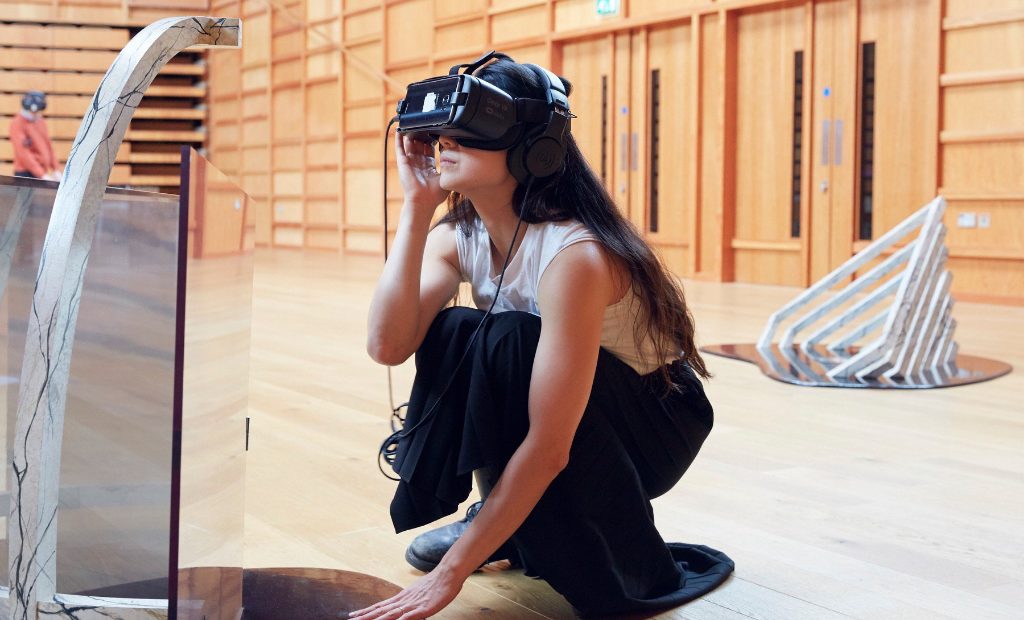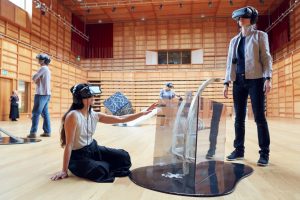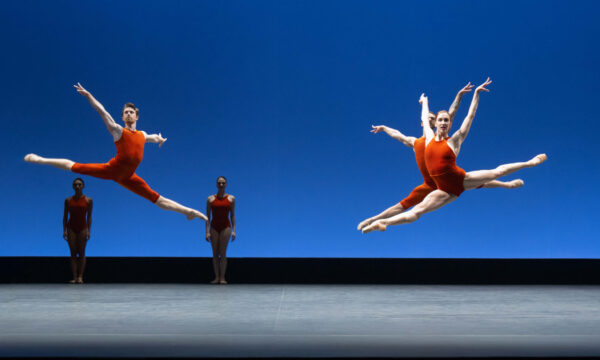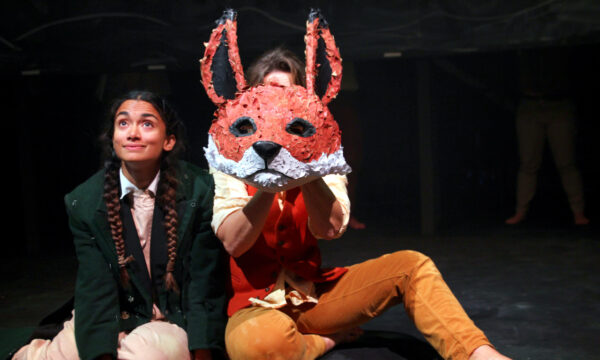Whist at Sadler’s Wells

Whist is a virtual reality show that was born out of directors Esteban Forumi and Aoi Nakamura’s desire to explore the notion of the unconscious. The fully immersive one-hour piece takes place in an empty room where a few abstract looking objects are on display as if in an art installation setup. The audience is required to wear a virtual reality headset with attached headphones and await on-screen instructions as they stand around the space. The image of an object in the room soon appears on the display, and each participant must move towards the object and align the image they see with the actual piece. When the two match, a scene begins playing. Each match unlocks a new part of the story, although it is perhaps inaccurate to call it a story, as it is rather a sequence of fragmented, dream-like sketches. The objects that appear on screen differ for each person and they prompt one of 76 possible routes, depending on what the viewer focuses on.
All of the acting takes place in the virtual dimension, so there is no live performance per se. The scenes have the quality of dreams and fantasies, involving little to no dialogue and surreal, raw images often involving fear and sensuality. The piece is certainly unique and the effort behind its making notable. Sitting somewhere between interactive art installation and futuristic theatre, the most applaudable aspect of the show is the way the audience’s journey is orchestrated, and how the physical and virtual pieces all fit the puzzle. Whist is a fascinating experiment that was doubtless both challenging and exciting to piece together. Leaving aside the evidently intricate behind-the-scenes work and looking at it purely from the viewers/participator’s perspective, however, the show itself lacks substance.
Once the novelty of the process wears off, and the slight discomfort of occupying the space as if blindfolded is overcome, what is left of the show does not make the strong impression that the subject-matter potentially allows. The fragmented nature of the piece does not get a momentum going, and while the images witnessed are intriguing, one is left with the feeling that there is too little in terms of narrative or audience involvement to ponder after the experience. This is redeemed in part with a post-show activity that directs each participant to a website they can visit in their own time, where they can access a personalised psychic analysis based on their choices. The analysis also adds some context to what was witnessed, which enriches the experience and highlights the hidden merits of the concept. Ultimately, Whist is a superb idea that results in an interesting, but not captivating, show.
Mersa Auda
Whist is at Sadler’s Wells from 19th June until 23rd June 2018. For further information or to book visit the theatre’s website here.

























Facebook
Twitter
Instagram
YouTube
RSS